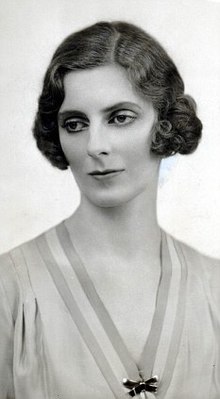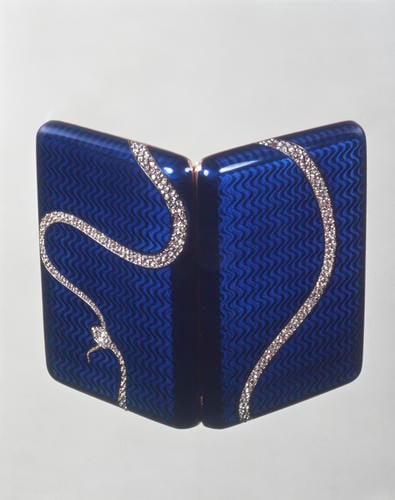According to Hello, Queen Camilla debuted her famous diamond serpent necklace in 2001. For years it was widely believed the necklace had been a gift from King Charles, until recently, during Their Majesties’ State Visit to Kenya, the Daily Mail’s Rebecca English reported that the piece belonged to her grandmother.

Queen Camilla looked elegant in a blue tunic top and palazzo-style trousers by one of her favourite designers, Anna Valentine. She also sported a diamond elephant bracelet and a necklace belonged to her adored grandmother by Van Cleef & Arpels.
Rebecca English

Artemesia’s Royal Jewels blog describes the necklace as consisting of “round and square-cut diamonds that adorn the serpent’s body, set in a platinum frame. The head of the snake is decked with smaller round diamonds, with two tiny rubies for the eyes.”
While searching for more information, I came across similarly striking pieces by Cartier and Bulgari.

The search eventually lead me to quite an interesting find in the Royal Collection, a Fabergé cigarette case presented to King Edward VII in 1908 by Alice Keppel, Queen Camilla’s great–grandmother.
Cigarette case 1908
Cigarette case, Art Nouveau style, red gold covered with dark blue moiré guilloché enamel, the whole box encircled by serpent of pale green gold with scales formed by rose diamonds, edge banded in plain gold mounts, thumb-piece of rose diamond set in gold.


This elegant cigarette case has a provenance unique in the history of the royal collection of Fabergé, having left the collection in 1911 only to be returned over twenty years later. The case represents one of Fabergé’s greatest expressions of the Art Nouveau style, with its sinuous diamond-set snake entwined around the front and back of the box. The moiré guilloché enamel is in one of Fabergé’s most exceptional colours.
But the design is not purely decorative; the snake biting its tail is a symbol of unbroken and everlasting love and thus it is not surprising to learn that the case was given to King Edward VII by his favourite mistress, Mrs George Keppel, in 1908.
Perhaps recognising the significance of the gift, Queen Alexandra returned it to Mrs Keppel as a memento following the King’s death in 1910. Twenty-five years later, in 1936, Mrs Keppel gave the case to Queen Mary, thereby ensuring that it would remain in royal ownership
By the end of the first decade of the twentieth century, FABERGÉ was producing works in the popular Art Nouveau style. This case is one of Fabergé’s most successful, combining sumptuous guilloché enamelling with a diamond-set mount in the shape of a snake biting its tail – the symbol of everlasting love.
Fabergé in the royal collection
Described as an “avid collector of Fabergé”, Mrs. Keppel had two daughters, Violet and Sonia. Sonia Rosemary Keppel wrote her memoir “Edwardian Daughter” in 1958 and had two other books published, “Three brothers at Havana, 1762” and “The Sovereign Lady: A Life of Elizabeth Vassall, Third Lady Holland, with Her Family”. She was appointed Officer, Order of the British Empire (O.B.E.) in 1959 and reportedly had a great relationship with her granddaughter who went on to support the work involving research and treatment of osteoporosis after seeing both her mother and grandmother suffer with the disease.


Back to the necklace, The Royal Watcher blog has noted that “while it has been suggested to be an heirloom from her own family, the necklace was more likely a gift from the then Prince of Wales”.
The plot thickens.

Leave a comment